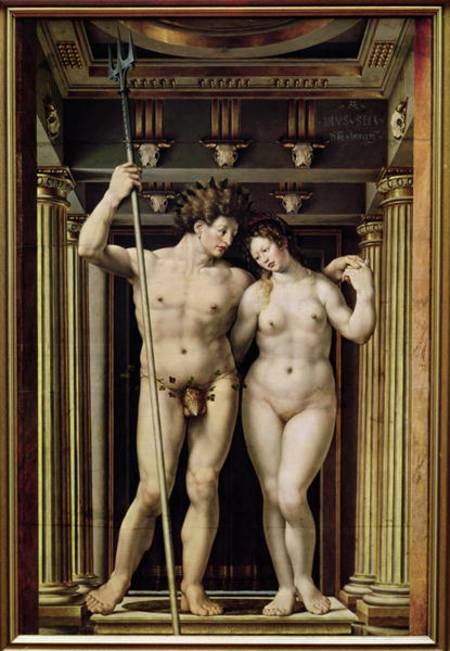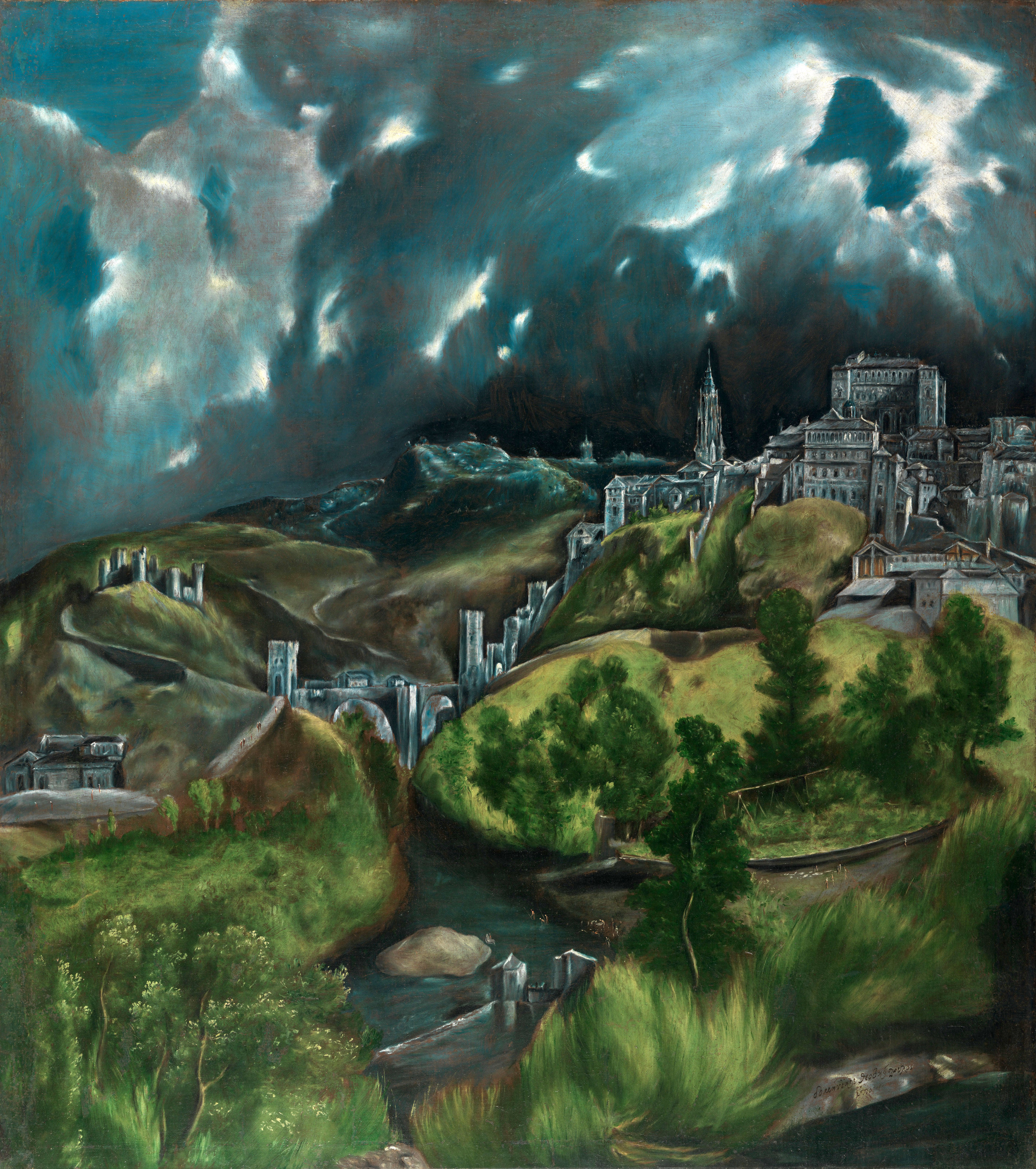 |
| Jan Gossaert, Neptune and Amphidrite, ca 1516. High Renaissance; Netherlands. |
One element of this painting that I appreciate is Gossaert's concept of painting the figures that they so closely resemble free-standing statues standing in a room. His majestic subjects are full-figured, which I love because it seems to contrast so starkly with the modern West's idea of ideal male and female bodies . Another is his color choice. I find it interesting that Gossaert chose to use rather earthy tones amid the fact that his subjects are the mythological god, and goddess, of the sea. Nevertheless, it is evident that Gossaert illustrates his subjects' relationship with the vast sea by including the conch shell covering Neptune's genitals, and the shell atop Amphitrite's head.
 |
| El Greco, View of Toledo, ca.1619. High Renaissance/ Mannerist Art; Spain. |
El Greco's
View of Toledo is fantastic. By far, my favorite landscape painting out of all of the chapters we've studied so far. The chimerical depiction of the landscape, however "manneristic", has a somewhat realistic element to it. The clouds, for instance, seem to be very realistic in that they are not painted as isolated, rigid forms, but are represented as abstract and interconnecting wisps of white that fade into the blue of the sky.






